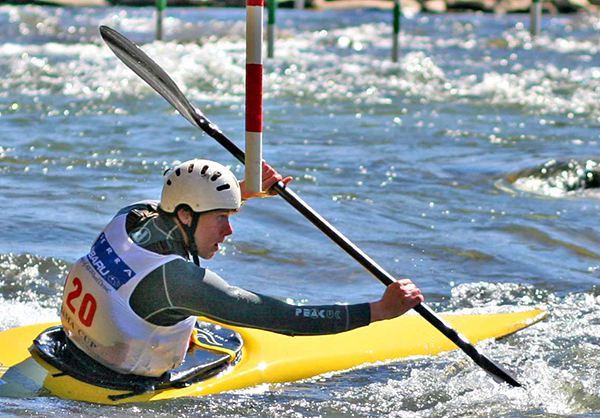
Whitewater races offer non-stop action
By David Haynes
Whitewater canoe and kayak slalom enthusiasts from around the Southeast will converge on North Alabama’s Blount and Cullman counties in February and March for the three races of the Alabama Cup Series.
The three-race series that started in 1992 not only gives participants the opportunity to measure their skills against others in the sport, but it has evolved into three annual must-go get-togethers for serious paddlers in the state.
This year’s races – two on the Locust Fork of the Warrior River and the third on the Mulberry Fork of the Warrior River – are scheduled as follows:
- Locust Fork Invitational: Feb. 6-7, 2016
- Mulberry Fork Canoe and Kayak Race: March 5-6, 2016
- Locust Fork Whitewater Classic: March 19-20, 2016
Times vary for actual race start times at these all-weekend events, but typically racing is under way from about 9 a.m. until mid-afternoon.
Both races on the Locust Fork will be held at King’s Bend just upstream of the U.S. Highway 231 bridge north of Cleveland. Spectators should take the first right turn going north after crossing the bridge. Signs will be posted on race weekends.

Spectators for the Mulberry Fork should take Exit 291 off Interstate 65 and go east on Alabama Highway 91 for 4.1 miles to Cullman CR 509 and turn right. The race site is 2.3 miles on the right.
A small parking/admission fee is charged for each event.
Slalom whitewater racing is a sport in which the racer or racers, in either a solo or tandem canoe or kayak, maneuver through a numbered series of gates, in the correct order, all while negotiating the hazards of a Class II or III rapid, with one additional challenge.
The gates, which consist of two PVC poles suspended from cables above the river, are painted either green-and-white or red-and-white, designating whether it must be run with the river’s main flow or opposite the flow (green/white for downstream or red/white for upstream). By rule, each slalom course is 250 and 400 meters in length and has between 18 and 25 gates, including a minimum of six designated upstream gates.
The addition of upstream gates means that during each racer’s run he or she must use a combination of river currents and paddling skills to move the boat opposite the river’s flow to pass through the upstream gates, which are typically placed in the eddies that occur in rapids where the actual current is reversed in the small area below a rock or other obstruction.
Racers are timed for two runs, and the best of their two times is used to determine the winner in each class. If a racer touches a gate, a two-second penalty is added to his or her time. Missing a gate adds 50 seconds to the time for a run.
To score each competitor’s run requires gate judges – usually volunteers – who carefully watch each racer’s run through their assigned section, then radio to scorekeepers whether the racer touched or missed any gates.
Spectators are treated to non-stop action as each racer takes a turn on the course, negotiating the gates in brightly-colored boats, maneuvering in and out of white-capped waves, recirculating hydraulics and eddies as the river’s currents tug from all sides.
A kayak is no ordinary boat

Whitewater kayaks aren’t like most boats. Rather than sitting in the boat you actually wear it like a pair of pants, with feet, knees and thighs locked into a position designed to allow the paddler to use hip tilt or a twist of the body to gain leverage when turning the kayak. The paddler must always be aware of the direction of the main flow and of what currents are beneath the boat at a given moment. Making a turn through a slalom gate involves a number of skills: timing the start of the turn to put the kayak in position so the river current doesn’t push it past the gate, tilting the boat on edge to enter the turn, executing the correct paddle stroke while in the turn and finally having the right boat lean and paddle stroke to exit the gate and set up for the next one, all while avoiding touching either gate pole with the boat or paddle.
These skills translate directly to the techniques needed for safely running rivers and creeks in non-racing situations, so participation by paddlers from newcomers to the sport to seasoned aficionados is encouraged. There are classifications for almost any skill level available for each of the races in the series.
Because races are held in somewhat remote locations and the number of staff needed, staging these events requires a year-round effort on the part of organizing body, which is the Alabama Cup Races Association. The event typically needs several dozen persons to handle everything from parking to gate judging to safety, and most are volunteers from the canoe clubs or groups around the state.
In addition to the weekend of the event itself, organizers and staff typically put in one or more “work days” on the weekend preceding the event to get the cables from which gates are suspended set up, as well as other pre-race preparation.
For additional information, to register to race or to volunteer, please visit the Alabama Cup Racing Association’s website at alabamacupraces.com or their Facebook page at www.facebook.com/ALCupRaces.




